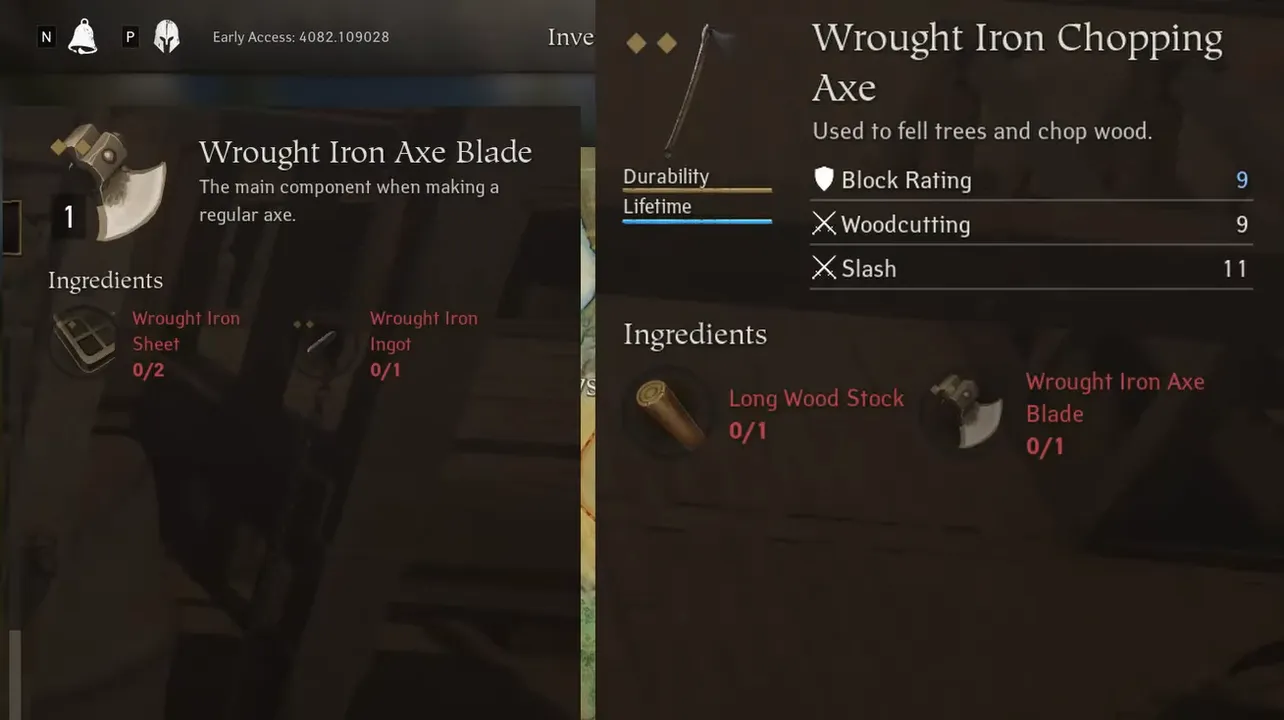Pax Dei treats tools as core progression items, not just gear you equip and forget. They sit alongside weapons in the game’s item taxonomy, and they’re tightly linked to recipes, crafting skills, and workstation tiers. If you’re building a village, venturing into dungeons, or just trying to keep your supply chain flowing, understanding how tools fit across those systems saves time and materials.
Pax Dei tools overview (what counts as a tool)
In Pax Dei, “tools” appear in two broad forms:
- Wieldable items you use directly (grouped with weapons under Tools & Weapons). These include progression-critical implements tied to gathering and combat-adjacent roles.
- Crafter toolkits placed at workstations, which unlock higher-tier benches and new recipe sets for a discipline.
Items are organized under familiar categories (Materials, Consumables, Tools & Weapons, Armor & Accessories, and Arrows), while crafting spans disciplines such as Alchemy, Blacksmithing, Armorsmithing, Weaponsmithing, Carpentry, Tailoring, Leatherworking, Jewelry Making, Fletching, Baking, Cooking, Charcuterie, and Winemaking and Brewing. Tool recipes are surfaced across those skills and also appear in focused recipe groups like Tools, Woodcutting, and Skinning.
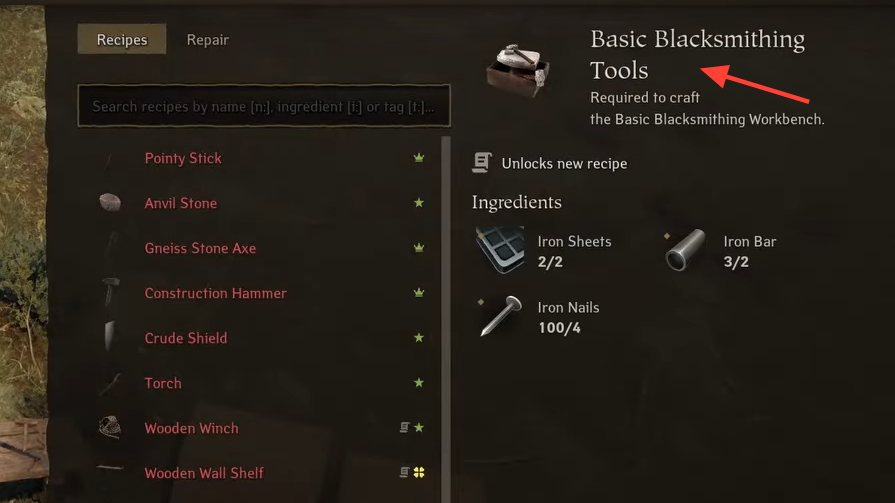
Crafting disciplines and tool categories
Tool crafting is spread across multiple professions. A few practical patterns:
- Metal-forward tools and upgrades lean on Blacksmithing and Armorsmithing.
- Workstation unlock kits track to their discipline (Alchemy instruments for alchemy, armorer tools for armor workbenches, and so on).
- Gathering-adjacent entries are grouped under category filters like Tools, Woodcutting, and Skinning so you can isolate progression pieces without sifting through weapons and décor.
That split matters: some tools are gear you carry, others are “keys” that expand your crafting infrastructure.
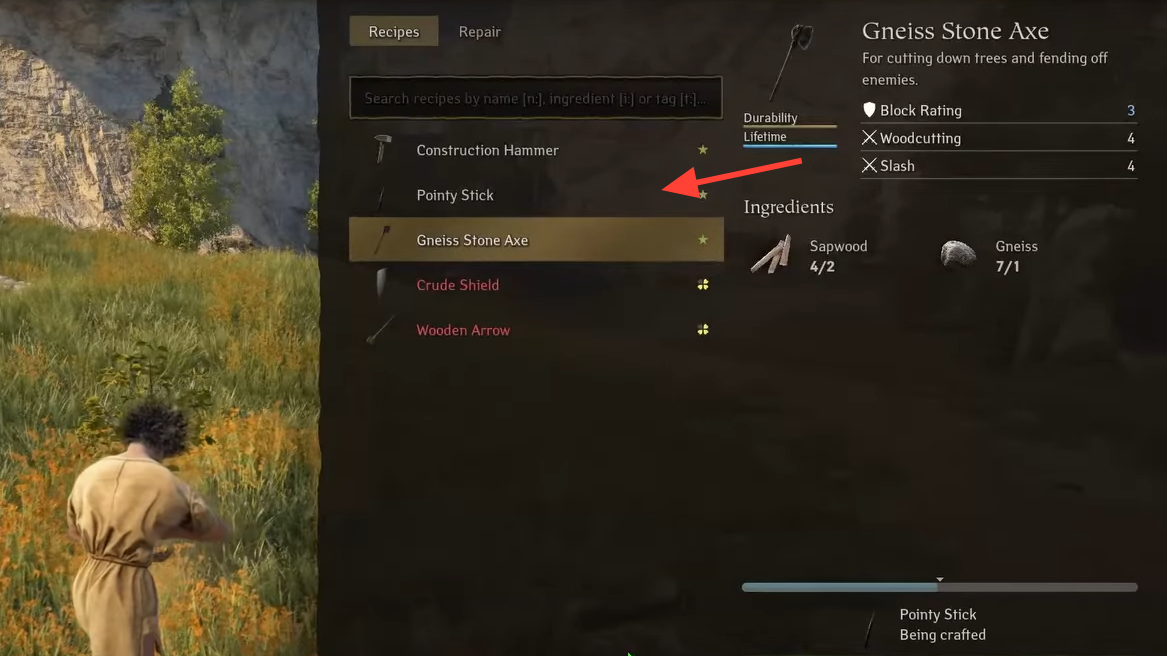
Tool tiers and difficulty (Tier 0–3 and Diff.)
Every craftable entry lists two signals you should pay attention to:
- Tier: a rough progression band (Tier 0 through Tier 3 in current listings) that aligns to resource access and overall power.
- Diff.: the recipe’s difficulty value within a discipline, a good proxy for when it’s safe to attempt without wasting materials.
When planning upgrades, sort tool recipes by Tier first to set goals, then by Diff. to time your actual crafts. This is especially useful for multi-part projects where you need a station unlock kit before you can make the tool you ultimately want.
Unlocking workstations with toolkits
Several disciplines gate their next crafting tier behind a dedicated toolkit recipe. Crafting and placing these items upgrades or unlocks the corresponding workstation level, which then exposes new recipes.
- Alchemy Instruments — Alchemy, Diff. 21. Unlocks Alchemy Workbench 2 (new alchemical recipes become available).
- Armorer Tools — Armorsmithing, Diff. 21. Unlocks Blacksmith Armor Workbench 2 (armor-focused progression).
You’ll see similar patterns across other disciplines. If you’re stuck, look for a discipline’s named “tools” or “instruments” entry in its recipe list; that’s often the bottleneck you need to clear before better tools and gear appear.
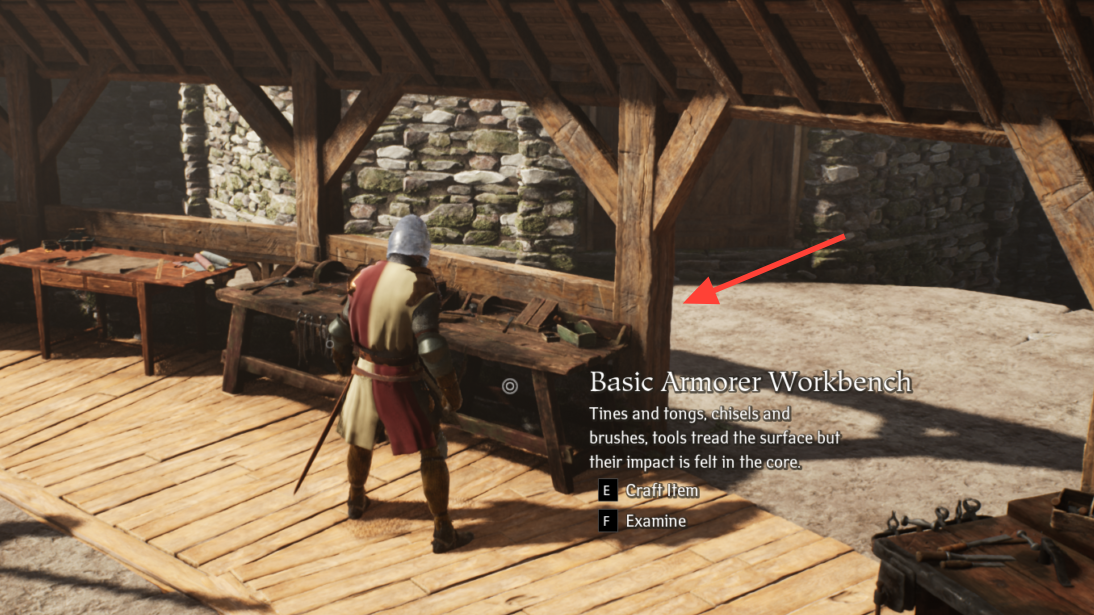
Where tools and weapons meet
Tools live next to weapons under the game’s wieldable item umbrella, and they share similar data: stats, a crafting source, unlock requirements, and tiering. That design makes sorting easy when you’re deciding between incremental tool upgrades and a weapon you also need for your next dungeon run. Treat the whole “Tools & Weapons” group as one pool to balance your material spend against what you’ll do next: gather, build, or fight.
Filter recipes to find tools faster
The recipe interface exposes several filters that make short work of planning:
- Tier: zero in on the band you can realistically craft today.
- Skill: jump straight to the discipline that owns the tool you’re after (e.g., Alchemy, Blacksmithing, Armorsmithing).
- Category: narrow to Tools, Woodcutting, or Skinning when you’re chasing specific gathering or utility items.
Use Skill + Category together to avoid noise. For example, filtering to Armorsmithing + Tools surfaces the unlock kit you need before browsing armor pieces themselves.
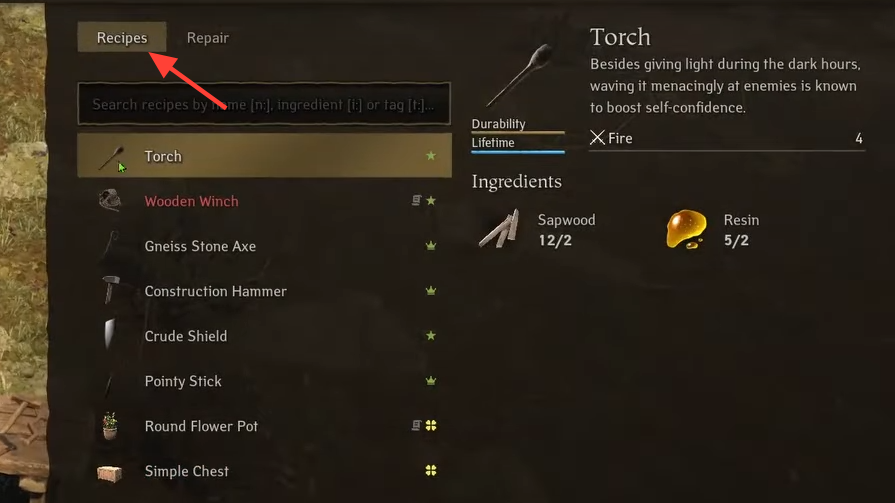
Examples of tool-focused recipes and roles
| Tool or unlock item | Discipline | Primary role | Notable detail |
|---|---|---|---|
| Alchemy Instruments | Alchemy | Unlocks higher-tier alchemy workstation | Diff. 21; required to expose more alchemy recipes |
| Armorer Tools | Armorsmithing | Unlocks higher-tier armor workbench | Diff. 21; gates advanced armor crafting |
| Tools (category) | Varies | Wieldable utility and gathering items | Filter by Tier 0–3 and by discipline for exact entries |
| Woodcutting (category) | Varies | Gathering-adjacent recipes | Use with Tier filter to plan early progression |
| Skinning (category) | Varies | Gathering-adjacent recipes | Pairs with leatherworking paths downstream |
Practical planning for tool progression
A straightforward path for early and midgame:
- Identify your next workstation unlock kit in the relevant discipline and craft it when the Diff. value is manageable.
- Use the Tier filter to line up the next tool or wieldable you’ll craft after the station upgrade.
- Check adjacent categories (Woodcutting, Skinning) for utility items that reduce friction in your resource loop.
Small habit, big payoff: before any major build or dungeon push, scan Tools & Weapons once for obvious tier upgrades. Many are inexpensive compared to the time saved in the field.
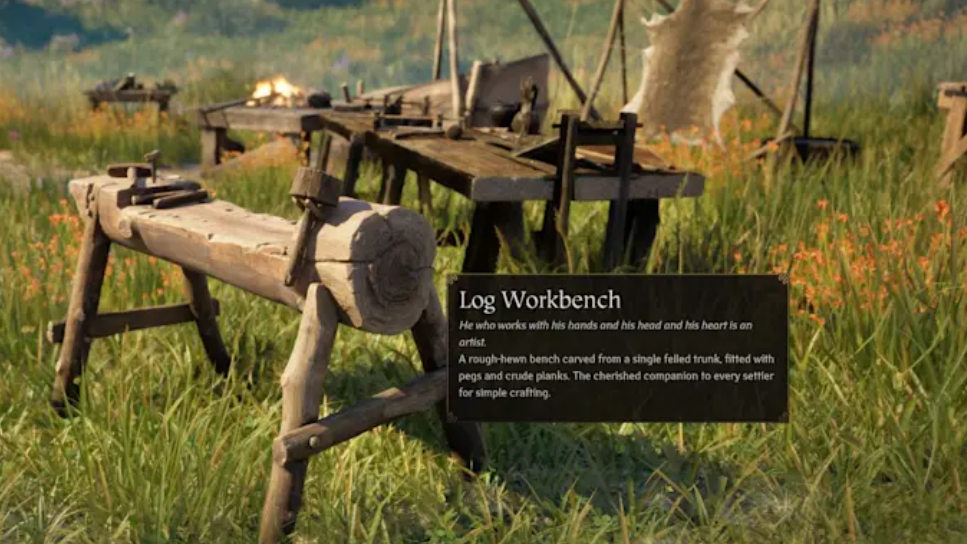
Pax Dei’s tool system rewards planning. Most roadblocks are either a missing workstation kit or a recipe hiding behind the wrong filter. Set your Tier and Skill, look for the discipline’s named toolkit, and the rest of the tool and weapon tree opens up quickly.

